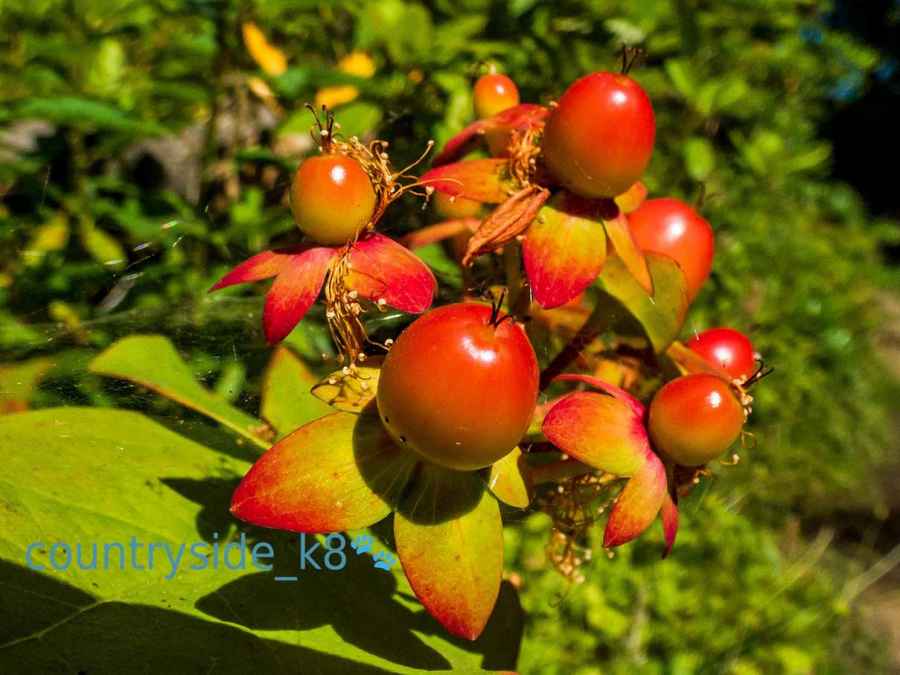
Tutsan
Tutsan
Latin name: Hypericum androsaemum
Tutsan has showy, cupped yellow flowers with prominent stamens, like pins in a pin-cushion, which rise in small clusters above large stalkless leaves. The stems are reddish with two raised lines, with the oval to oblong green leaves in pairs. The flowers are followed by long lasting berry-like fruits, that are green when young, turning red, then finally black.
All parts of the plant are toxic, but the berries are to be avoided and should most definitely not be consumed.
Found in damp places in woods and hedgerows, the flowers appear from June through to August.
Tutsan is derived from the French ‘toute-saine’ meaning ‘all healthy’.
Medieval herbalists laid the leaves across flesh wounds to help them heal, as the plant has genuine antiseptic properties. Tutsan ointment is used to dress cuts and wounds.
Occasional in Britain, though absent from much of Scotland.
Created: 8 October 2018 Edited: 27 October 2018
Secrets of Shaly Dingle
Own label and private label building products
We produce, brand and supply for some of the biggest names in the industry. Read more...




